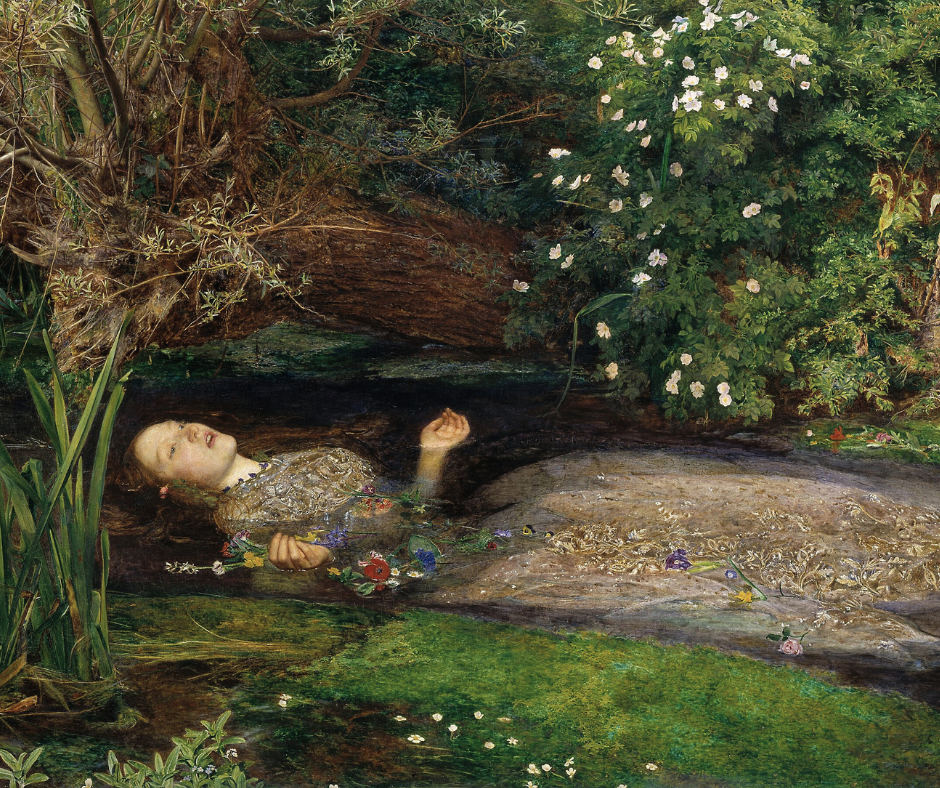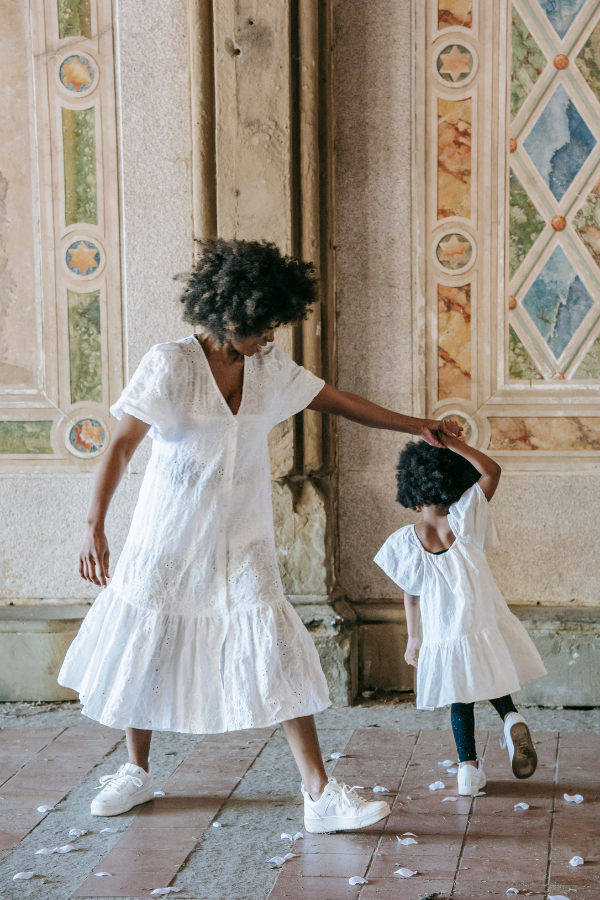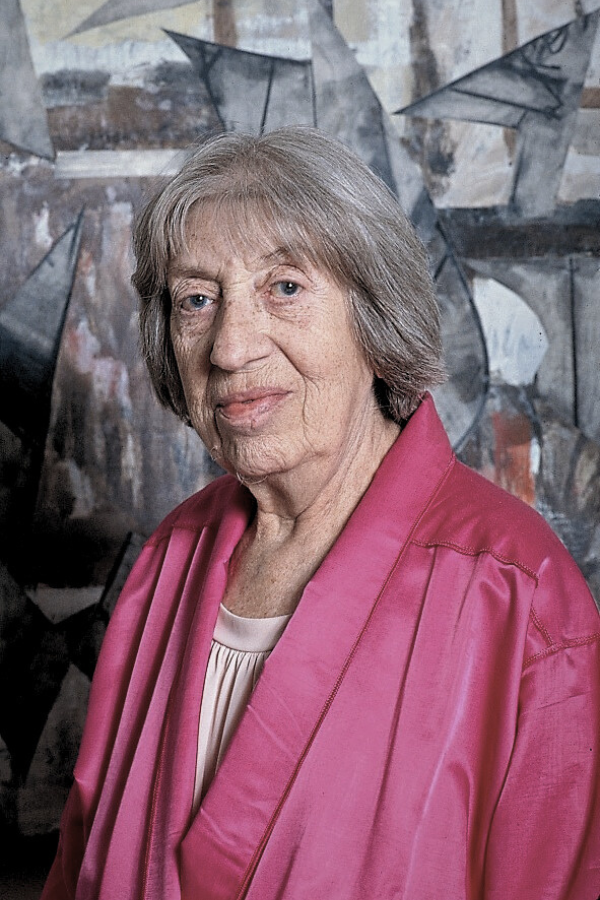
Artists Who Inspire: Abstract Expressionism
Summary
Reflection Questions
Journal Prompt
Abstract Expressionism—often characterized by its non-representational forms and emotive use of color and brushwork—was one of the most influential movements in 20th-century art. Emerging primarily in the post-World War II era, it marked a departure from traditional artistic styles—seeking instead to capture raw emotion and the intricacies of the subconscious mind. This abstract art movement—rooted in the vibrant art scene of New York City during the 1940s and 1950s—not only redefined artistic conventions but also established the art world’s focus on the United States as a new epicenter for avant-garde innovation. Of course, the movement later spread to cities like San Francisco. The significance of Abstract Expressionism extends beyond its pioneering artists and their groundbreaking works. It represents a pivotal moment of evolution, experimentation, and global influence in the annals of art history. Learn more about the movement, its influences, and the artists who exemplified Abstract Expressionism below.
Historical Background and Spurring of the Movement
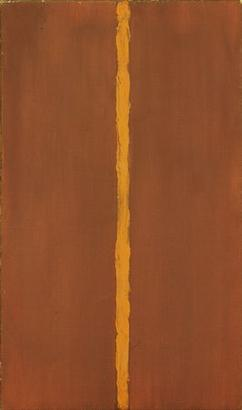
In the aftermath of WWII, the world found itself grappling with the profound scars left by unparalleled global conflict, atomic anxiety, and the horrific, haunting revelations of the Holocaust. The socio-political climate of this era—especially in the United States and particularly in New York—was marked by a pervasive sense of dislocation, uncertainty, and a need for introspection. Amidst this backdrop, artists sought means to articulate the complexities of the human condition, the existential crises, and the tumultuous emotions that traditional artistic forms seemed inadequate to express.
The Abstract Expressionist Movement emerged as a response to these profound societal upheavals. Artists of this movement sought to break free from the constraints of representational art—which they felt was insufficient in conveying the depth of human experience in such a charged context. The movement was less about portraying reality and more about tapping into deeper emotional and psychological realms.
Driven by a desire to delve into the subconscious, the Abstract Expressionists aimed to bring to the canvas an unmediated expression of emotion—often emphasizing spontaneity, vigor, and improvisation in their techniques. This emphasis on the visceral and the intangible marked a significant shift in the art world—with Abstract Expressionism heralding an era where art became a direct channel for raw emotion, introspection, and profound existential exploration.
Hallmarks of the Abstract Expressionist Style
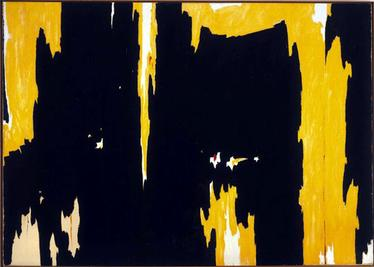
The Abstract Expressionist style is distinguished by several defining characteristics, each representing a departure from traditional artistic norms. At its core, the movement championed non-representational art.
This meant that instead of focusing on depicting tangible subjects or recognizable forms, the artists gravitated towards abstraction. They eschewed the familiar landscapes, portraits, or historical scenes that had long dominated the artistic canon.
In doing so, they sought to capture something more elusive and profound: the essence of emotion, the stirrings of the subconscious, and the intangible realms of the human psyche.

are you a fine artist or photographer?
Spontaneity and Automatism
Integral to this modern art approach was an emphasis on spontaneity and the automatic process. Many Abstract Expressionists believed that art should arise organically—without premeditated thought or design. They championed techniques that allowed for subconscious creation—where the artist became almost a conduit for emotion, channeling it directly onto the canvas.
This spontaneity was further underscored by their choice of medium and method. Bold colors—applied with vigor and often without meticulous blending—became a staple. Dramatic brushstrokes—whether meticulous or wild—conveyed energy, movement, and emotion. The large canvases—often monumental in scale—served as expansive arenas where these dramas of color and form could unfold—enveloping the viewer and inviting them into the emotive depths depicted.
Action Painting

One of the most iconic techniques to emerge from this movement was “Action Painting.” This method—epitomized by artists like Jackson Pollock—involved physically interacting with the canvas—often placing it on the ground and allowing paint to drip, splash, or be thrown upon it.
The raw canvas became more than just a passive recipient. It was an active participant. Every drop of paint, every mark, was a record of the artist’s physical and emotional engagement with their work. Through Action Painting, the very act of creation became a performance—a kinetic display of emotion, and an embodiment of the artist’s inner world.
This dynamic approach further solidified Abstract Expressionism’s position as a movement deeply invested in exploring and expressing the depths of human experience.
Influential Abstract Expressionist Artists
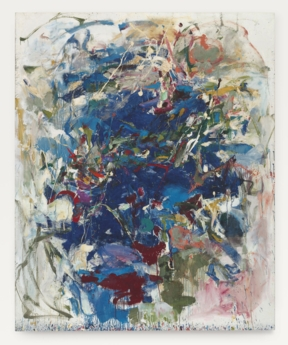
Many artists contributed to this movement. For example, Robert Motherwell was celebrated for his series “Elegy to the Spanish Republic.” Motherwell’s works often combined black and white with bold color statements—exploring themes of life, death, and conflict. Barnett Newman was another key figure. Newman’s “zip paintings” feature vast fields of color interrupted by vertical lines or “zips.” His work is a meditation on spatial relations and the human experience.
With jagged, vertical forms and a unique palette, Clyfford Still’s paintings often resemble natural elements like rock formations or cliffs. Phillip Guston’s later works are characterized by a more cartoonish representation of personal symbols and objects—rendered in thick brushwork. Joan Mitchell’s works are energetic—with vibrant colors in a layered, gestural manner, often evoking landscapes or natural phenomena.
Other influential artists from the period include the following. We will examine the work of several notable Abstract Expressionists in further detail below.
- Jackson Pollock
- Willem de Kooning
- Mark Rothko
- Lee Krasner
- Franz Kline
- Arshile Gorky
- Richard Pousette-Dart
- Hans Hofmann
- Adolph Gottlieb
- Joan Mitchell
- Grace Hartigan
- Helen Frankenthaler
- Harold Rosenberg
- Elaine de Kooning
- James Brooks
- Norman Lewis
- Sam Francis
- Ad Reinhardt
- Bradley Walker Tomlin
- Michael Goldberg
- Conrad Marca-Relli
- Larry Rivers
- Ed Clark
- Milton Resnick
- Louise Nevelson (primarily known for sculpture within the movement)
- Raymond Parker
- John Ferren
- Theodoros Stamos
- Jack Tworkov
- Esteban Vicente
- Robert Rauschenberg (early work; later moved into Pop Art)
- Jay DeFeo
- Perle Fine
- Anne Ryan
- Jean-Paul Riopelle
- Alfred Leslie
- David Smith (known for sculpture within the movement)
Well-Known Figures During the 20th Century
Jackson Pollock
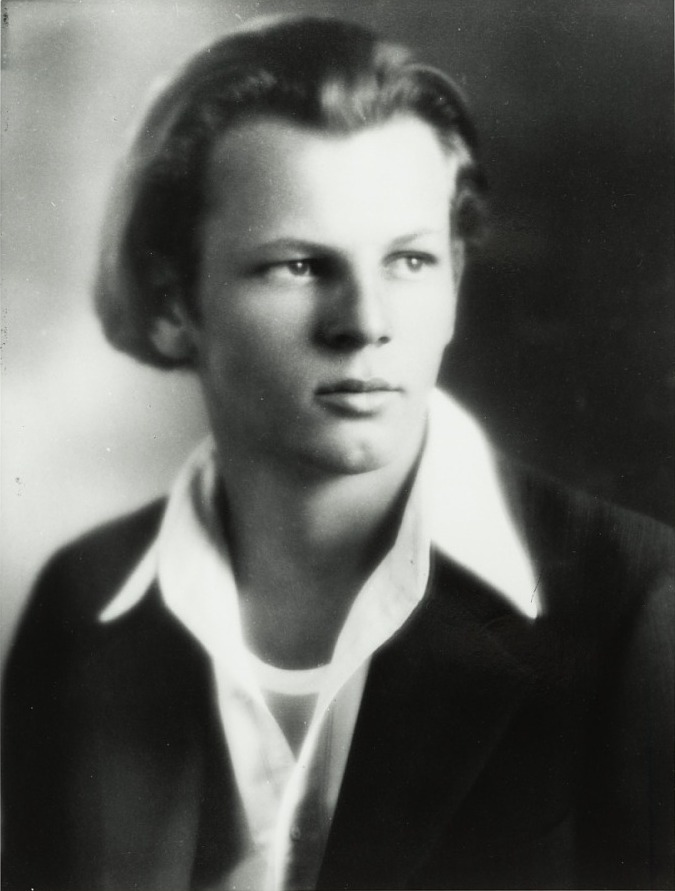
Jackson Pollock—one of the most emblematic figures of the Abstract Expressionist movement—carved out a distinct niche with his revolutionary approach to painting. Born in 1912, Pollock’s early artistic journey was influenced by regionalism and the Mexican muralists. However—as he delved deeper into his own creative psyche and grappled with personal struggles—he began to drift towards a more abstract and emotive style—heavily influenced by the New York School.
Pollock’s Approach to Abstract Expressionism
Central to Pollock’s Abstract Expressionist paintings was the development of his “drip technique.” Eschewing the traditional use of easel and brush, Pollock placed his canvases on the ground—allowing him a 360-degree engagement with his work. Using sticks, trowels, or his hands, he would drip or pour paint from above—letting it splash and spread in a seemingly chaotic manner.
Yet—while it might appear spontaneous—Pollock’s process was deeply intentional. He often described his art as “energy made visible,” and this energy is palpable in the dynamic interplay of lines, splatters, and swirls on his canvases. The resulting works—devoid of any recognizable form or center of attention—represented a radical break from tradition—challenging established notions of composition and foregrounding the importance of the painting process itself.
His style—characterized by its rhythmic quality, dense textures, and intricate layering of paint—drew inspiration from various sources. From Native American sand painting to Mexican muralists, and from Jungian psychology to personal introspection, Pollock’s work was a melting pot of influences. However, it was his fascination with the subconscious and the act of creation as a cathartic, expressive ritual that drove his unique approach.
Pollock’s Enduring Influence
Pollock’s influence on the Abstract Expressionist movement—and later contemporary art movements—cannot be overstated. While he was not the sole practitioner of drip painting, his radical methods and the raw emotional intensity of his works made him a focal point for critics, art historians, artists, and the public.
He brought a new level of attention to the movement—becoming a somewhat controversial figure, celebrated by some for his innovative techniques and criticized by others for what they perceived as a lack of discipline or structure. Nonetheless, his legacy is undeniable. Pollock pushed the boundaries of what art could be—emphasizing the act of painting as an event in and of itself.
In doing so, he not only reshaped the trajectory of modern art but also paved the way for future movements—like performance art—that similarly blur the lines between process, product, and performance.
Mark Rothko

Mark Rothko—another luminary of the Abstract Expressionist movement—is renowned for his evocative “multiform” paintings—large-scale works characterized by soft-edged rectangles layered over muted backgrounds.
Born in 1903 in what is now Latvia, Rothko’s journey to his signature style was a gradual evolution—beginning with more figurative works and slowly moving towards pure abstraction as he sought to distill emotion to its most profound essence.
Rothko’s Approach to Abstract Expressionism
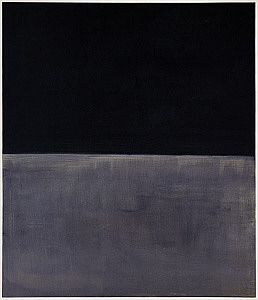
Central to Rothko’s process was the exploration of color relationships and their ability to evoke deep-seated human emotions. He once remarked that he was not interested in the relationship of color or form or anything else, but rather in expressing basic human emotions—tragedy, ecstasy, and doom.
Eschewing the vigorous, gestural techniques of some of his contemporaries, Rothko’s method was introspective and meditative. He meticulously layered thin washes of paint, allowing them to soak into the canvas—creating depth and luminosity. This meticulous layering technique imbued his works with a transcendent glow—inviting viewers into a contemplative space.
Fuel your creative fire & be a part of a supportive community that values how you love to live.
subscribe to our newsletter
Rothko’s style—particularly in the 1950s—is marked by its simplicity and profundity. His large canvases—often vertically oriented—are filled with two or three rectangles of color set against a contrasting background. The hues he chose—whether vibrant or subdued—interacted with one another—creating a harmonious tension.
While these works might appear static at first glance, their true power lies in their ability to envelop viewers, to draw them into a space of reflection and emotion. Rothko believed that art was an intimate experience—describing his works as “drama” and hoping that viewers would weep in front of his paintings—feeling the same emotions he felt while creating them.
Rothko’s Enduring Influence
Rothko’s contributions to Abstract Expressionism and the broader art world are manifold. Distancing himself from the frenetic energy of artists like Pollock, he brought a serene, almost spiritual dimension to the movement. His emphasis on pure color and form as conduits of emotion anticipated the rise of Color Field Painting, a sub-genre of Abstract Expressionism.
Moreover, his exploration of art’s potential to evoke emotion and provoke introspection had a lasting impact—influencing countless artists in the generations that followed. Throughout his career, Rothko remained committed to the belief that art had the power to touch the soul, and his deeply emotive canvases stand as testament to that conviction.
Willem de Kooning
Willem de Kooning—a Dutch-born American artist—remains one of the pivotal figures of the Abstract Expressionist movement. His oeuvre—characterized by a dynamic interplay of form and color—oscillated between abstraction and figuration—revealing his unceasing fascination with both the human figure and the limitless potential of abstract expression.
de Kooning’s Approach to Abstract Expressionism
De Kooning’s approach to Abstract Expressionism was deeply rooted in his rigorous academic training in fine arts in Rotterdam. This foundation—coupled with his immersion in the vibrant New York art scene of the 1940s—informed a process that was both instinctual and deliberate.
Unlike some of his contemporaries, de Kooning never completely abandoned the human figure. Instead, he sought to deconstruct and reconfigure it—often rendering bodies and faces with aggressive brushstrokes, fragmented forms, and a palette that ranged from fleshy pinks to bold, assertive colors.
Notable Series
One of de Kooning’s most notable series from this period is his “Woman” series. These paintings—with their distorted yet recognizable female figures—epitomize his style of this era. The figures are both assertive and elusive—constructed through layers of paint that seem to be perpetually in motion.
They represent de Kooning’s unique fusion of traditional subject matter with the unrestrained energy of Abstract Expressionism. His canvases from this series and others during this period are marked by their thick impasto, chaotic brushwork, and a tension between form and formlessness.
de Kooning’s Enduring Influence
Willem de Kooning’s influence on the Abstract Expressionist movement and subsequent art developments is profound. His relentless exploration of the boundary between abstraction and representation challenged prevailing notions of what modern art should or could be.
He provided a counterpoint to the more “pure” abstractionists like Rothko or Newman—showing that the human figure could still hold relevance in a movement that often sought to transcend it. Furthermore, de Kooning’s willingness to continuously evolve, to grapple with and reinterpret his own ideas, set a precedent for artistic evolution and fluidity.
His legacy is evident in the myriad artists who have since navigated the rich terrain between abstraction and figuration, and in the continued fascination with his work in exhibitions and scholarly discussions worldwide.
Abstract Expressionist Pioneers Who Were Later Celebrated
Lee Krasner
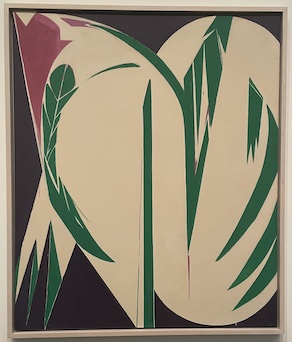
Lee Krasner—often overshadowed by her marriage to Jackson Pollock during her lifetime—stands as a formidable figure in the Abstract Expressionist movement in her own right. With a career that spanned several decades, Krasner’s work is characterized by its relentless innovation, fluidity between styles, and an evident passion for redefining the boundaries of art.
Krasner’s immersion in the New York art scene of the 1940s provided her with the intellectual and creative milieu that would inform her evolving artistic process. Initially influenced by mural painting and then by the School of Paris’s more gestural modes, Krasner was adept at synthesizing various stylistic influences.
This ability resulted in an oeuvre that, while diverse, maintained a distinctive voice. Her works—especially those from the 1950s—are marked by rhythmic, mosaic-like patterns, energetic brushwork, and a palette that veered between the boldly colorful and the monochromatic.
Krasner’s Approach to Abstract Expressionism
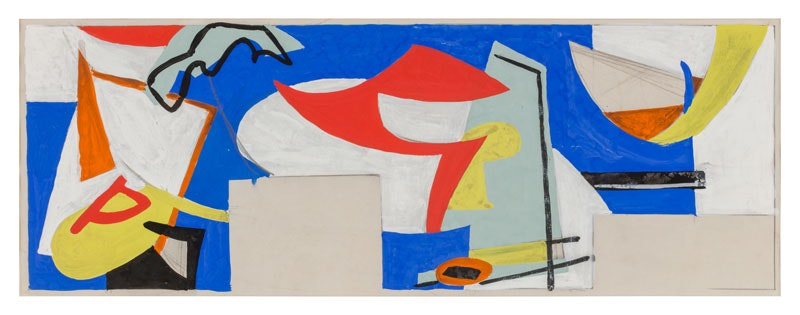
A hallmark of Krasner’s Abstract Expressionist process was her commitment to revision and reinvention. She often reworked her canvases, and in some instances, even tore up earlier works to create collages—imbuing new pieces with the fragmented history of her previous creations. This act of destruction and re-creation symbolized her belief in the cyclical nature of life and art—a theme recurrent in her works.
Krasner’s Enduring Influence on the Movement and Contemporary Art
Krasner’s influence on the Abstract Expressionist movement—while perhaps under-recognized during her lifetime—has been rightly reclaimed in subsequent years. Her approach to abstraction—marked by its dynamism and continuous evolution—provided a vital feminine perspective in a male-dominated movement.
Moreover, her dedication to the act of painting, her exploration of the emotional potency of color and form, and her fearless embrace of change have served as enduring inspirations for artists navigating the fluid landscape of modern art. It’s essential to recognize Krasner not just as a “female artist” or as Pollock’s spouse but as a pivotal contributor to Abstract Expressionism—whose works have left an indelible mark on the trajectory of 20th-century art.
Norman Lewis
Norman Lewis—a trailblazing African-American artist—holds a significant but often under-appreciated place within the Abstract Expressionist movement. Straddling the worlds of abstraction and social commentary, Lewis’s work reflects both the fervent energy of the era and a nuanced perspective shaped by his experiences with racial and social dynamics in America.
Lewis’s artistic trajectory evolved markedly over the years. Initially influenced by the Harlem Renaissance and its emphasis on African and African-American subject matter, he transitioned to abstraction in the 1940s—feeling it offered a more potent means to express universal human emotions and ideas.
However, this shift to abstraction did not signify a complete departure from social themes. Instead, Lewis masterfully interwove symbols and motifs into his abstract works—subtly commenting on issues of race, civil rights, and social justice.
Lewis’s Approach to Abstract Expressionism

Central to Lewis’s Abstract Expressionist style was his use of line. Whether flowing, jagged, or meandering, lines in his paintings often suggested forms and figures—hinting at gatherings, marches, or crowds. His palette was diverse—ranging from moody, monochromatic compositions to vibrant canvases bursting with color. The delicate interplay of line and color in Lewis’s works often results in a rhythmic, almost musical quality—making them both visually and emotionally resonant.
Lewis’s Impact and Enduring Influence
Norman Lewis’s influence on the Abstract Expressionist movement is multifaceted. As one of the few African-American artists associated with the movement, he brought a unique perspective—blending the ideals of abstract expressionism with pointed social commentary.
While he faced challenges due to racial biases—including limited recognition and exhibition opportunities compared to his white counterparts, Lewis remained committed to his artistic vision. In doing so, he paved the way for future generations of artists of color—challenging the often monolithic narrative of the art world.
His legacy—increasingly acknowledged in contemporary discussions—serves as a powerful testament to the role of personal identity in shaping artistic innovation and to the profound impact of diverse voices within overarching artistic movements.
Helen Frankenthaler
Helen Frankenthaler—a pioneering figure in the post-war American art scene—carved a distinctive path within the Abstract Expressionist movement with her innovative “soak-stain” technique and her lyrical approach to abstraction. Her work—distinguished by its ethereal beauty and delicate interplay of color and form—provided a fresh perspective within a movement often dominated by more aggressive gestural styles.
Frankenthaler’s foray into art was significantly influenced by her exposure to Jackson Pollock’s drip paintings. However, instead of adopting Pollock’s technique, she sought to refine and reinterpret it as her own artistic style. This led to her groundbreaking “soak-stain” method—where she poured thinned oil paint directly onto raw, unprimed canvas, allowing the pigment to soak into the fabric.
The result was a seamless integration of paint and canvas—with the colors emanating a translucent, watercolor-like quality. This technique was exemplified in her 1952 work Mountains and Sea—a piece often cited as a pivotal moment in the evolution of Abstract Expressionism and Color Field painting.
Frankenthaler’s Approach to Abstract Expressionism
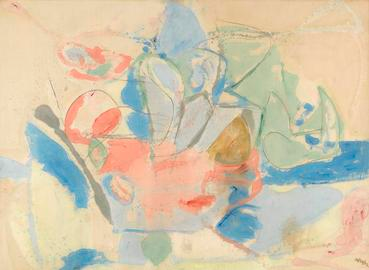
Frankenthaler’s style is characterized by its fluidity and expressiveness. Her works often evoke natural landscapes, with their soft hues, organic shapes, and the suggestive play of light and shadow. However, they remain resolutely abstract—with Frankenthaler more interested in capturing the essence of a scene or emotion rather than its literal representation.
Frankenthaler’s Enduring Influence on Abstract Expressionism and Later Movements
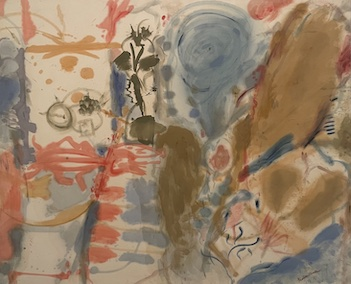
Helen Frankenthaler’s influence on the Abstract Expressionist movement and its offshoots—particularly Color Field painting—is profound. Her soak-stain technique opened up new avenues for exploration—influencing a generation of artists—including Morris Louis and Kenneth Noland—who adopted and adapted her methods.
Additionally, as a woman in a predominantly male-centric art world, Frankenthaler’s successes and innovations challenged gender norms and broadened the horizons for female artists in the movement. Her legacy is not only found in her own expansive body of work but also in the myriad artists she inspired, the boundaries she pushed, and the conversations she sparked regarding the intersections of technique, gender, and expression in the world of modern art.
Inspirations Behind Abstract Expressionism
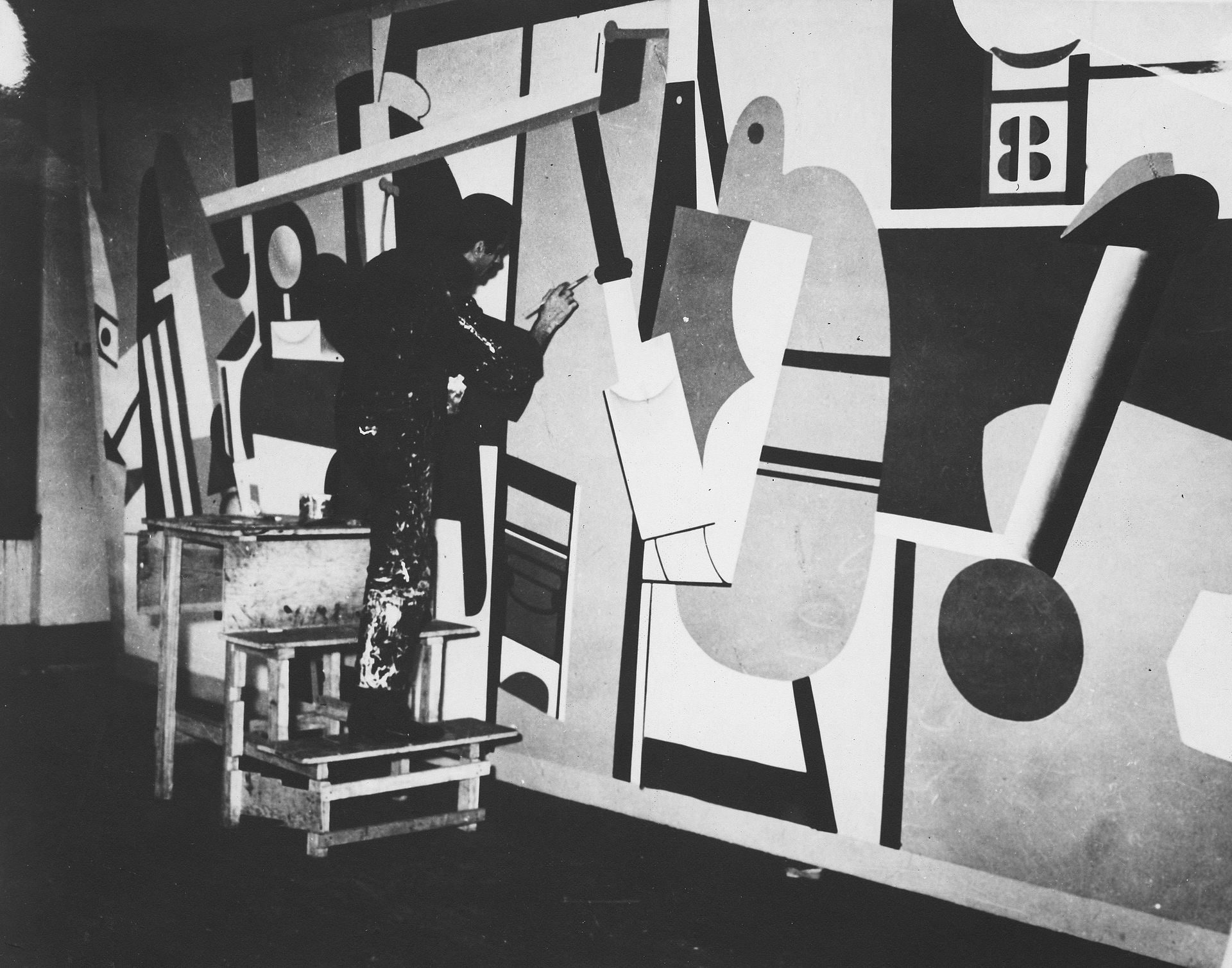
Abstract Expressionism—while a distinctly American phenomenon—drew from a wellspring of international inspirations. One pivotal influence was the Surrealist movement—which emphasized the significance of dreams, chance, and the unconscious mind—suggesting a world beyond the visible and rational. Earlier expressionist movements and artists also ushered in Abstract Expressionism. For example, Vasily Kandinsky—whose 1911 Rain Landscape is the featured image for this particle—is often identified as one of the unofficial founders of Abstract Expressionism.
This fascination with the inner psyche found further resonance in Jungian psychology—which posited the existence of a collective unconscious—a universal reservoir of archetypes and shared experiences. Such theories offered Abstract Expressionists a framework to delve into deeply personal yet universally resonant terrains of emotion and symbolism.
Additionally, the movement’s evolution was indelibly shaped by the broader backdrop of world events—most notably the profound human and moral crises engendered by World War II. The war’s horrors, its aftermath, and the resultant introspection it spurred in artists and thinkers alike all coalesced to create an environment ripe for an art form that grappled with complexity, anguish, and the very essence of the human spirit.
Influence on Later Movements and Its Legacy
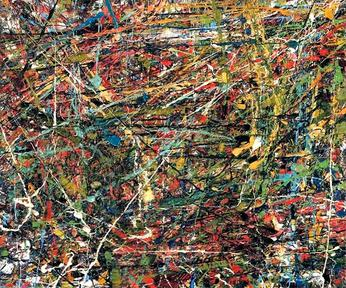
Abstract Expressionism’s impact extended far beyond its zenith in the mid-20th century—seeding a rich legacy that influenced myriad artistic movements and disciplines. Direct offshoots—such as Color Field Painting—embraced the movement’s emphasis on color’s emotive power, while Neo-Expressionism revisited its gestural intensity in the context of a later era.
Moreover, the movement’s influence transcended the realm of painting—inspiring sculptors, photographers, and performance artists, who all sought to capture its raw emotionality and spirit of innovation in their respective mediums. A notable cultural consequence of Abstract Expressionism was the birth of the “art star.”
Abstract Expressionism artists—with their larger-than-life personas and the public’s fascination with their processes—heralded a new era where the artist emerged not merely as a creator but also as a celebrity. Abstract painters and later contemporary artists commanded attention, set trends, and emerged as central figures in the evolving narrative of modern art.
Criticism and Controversy
While Abstract Expressionism is celebrated for its groundbreaking innovations and its indelible mark on the art world, it has not been without its share of criticisms and controversies. A salient point of contention has been the movement’s intertwining with the commercial art market—especially in New York where the nexus of galleries, dealers, and artists sometimes gave rise to allegations of commodification and dilution of artistic integrity.
Equally debated was the palpable gender disparity within the movement. Despite the presence of formidable female artists, they often found themselves overshadowed by their male counterparts—leading to discussions about systemic biases and the underrepresentation of women.
Furthermore, the movement’s predominantly Western-centric lens—rooted in the cultural and socio-political milieu of post-war America—occasionally faced scrutiny in its reception globally. Detractors pointed out its limited engagement with non-Western aesthetics and philosophies, while others grappled with its universality versus its inherently Western ethos when interpreting and adapting it in different cultural contexts.
Final Thoughts About Abstract Expressionism and its Artists
Abstract Expressionism—with its fervent passion and innovative spirit—has bequeathed an enduring legacy that continues to reverberate through the corridors of contemporary art. Its audacious exploration of emotion, form, and color has indelibly shaped the trajectory of subsequent artistic movements—offering both a foundation to build upon and a benchmark to challenge.
Even today, as artists grapple with an ever-changing global landscape, the echoes of Abstract Expressionism are palpable—whether in the bold strokes of a painter, the conceptual depth of a sculptor, or the avant-garde vision of a digital artist. It stands as a testament to the movement’s timeless relevance and its unyielding capacity to inspire, provoke, and resonate across eras and boundaries.



